“What will you be during the Lao New Year?”
“I don’t know… maybe play?”
It was the end of February 2020, and I had just arrived in Luang Prabang, Laos. I was excitedly chatting with my friend Sumiya, who was also supposed to come to Laos for her fieldwork a few weeks later.
Little did we know how naïve we were.
===
I arrived in Laos for the last leg of my fieldwork. Covid-19 had yet to rear its ugly head globally, but I needed to be careful. At the guesthouse where I stayed at, I disinfected surfaces and avoided other guests. My Lao friends were aware of this new virus, and shared with me the local perspectives. For example, there was a rumour that eating hard-boiled eggs would ward off covid-19, and so there was rush for villagers to buy eggs – causing a temporary spike in egg prices! There were not yet any covid-19 cases in Laos, because Lao people like to drink beer and the ‘heatiness’ from the beer kills the virus. And there was a joke that since there were still no covid-19 cases in Laos, it meant that although Laos is the least developed country in Southeast Asia, it has one of the most developed healthcare systems (or the healthiest/strongest people)!
At that time Singapore had one of the highest numbers of covid-19 cases after China. When Honey brought me to the market to get some groceries, the stallholder looked at me up-and-down with cautious suspicious when we told her that I was from Singapore. And, at short notice, I had to rearrange my plans to visit my field-site: the villagers were understandably worried about covid-19 and decided to ban foreigners from entering the village, so I had to delegate the fieldwork to my Lao friends assisting me.
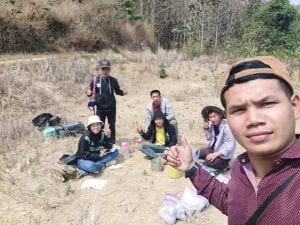
Oudom, Bouasot and villagers collecting soil samples while
I was barred from entering the village (29 February 2020) (photo credit: Oudom)
The 1-2 weeks that followed, in early-March, were productive and happy. My friends from Vietnam visited Luang Prabang for some work, so it was a period of catching up with one another. During the day, I worked at the Northern Agriculture & Forestry College’s (NAFC) laboratory with Bouasot. Villagers at my other field-site were less concerned by covid-19 (probably because their economy relies on supporting tourism), so we were able to carry out my fieldwork plans successfully. But on 11 March, the first of our three-day fieldwork at this village, I remember Oudom telling me that the covid-19 situation in Italy had worsened. On that day, covid-19 was declared a pandemic by the World Health Organisation.

Viengphet with chi Kien from Vietnam, exploring traditional Tai Lue instruments at the LPB BioBamboo restaurant (3 March 2020)
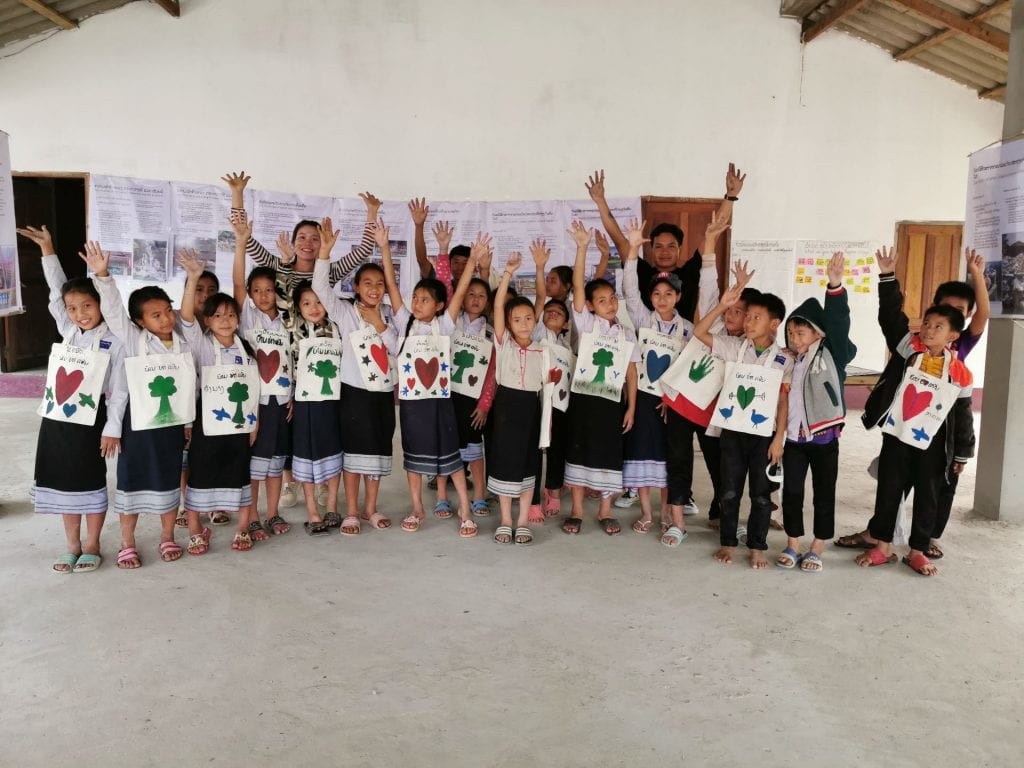
Oudom and Bouasot with the children at one of my fieldsites, during an outreach activity that was an extension of my fieldwork. Really proud of Oudom and Bouasot! (13 March 2020)
Over the next few days, the sky was very hazy from the slash-and-burn, but that wasn’t the only thing that put a blanket of foreboding gloom during my husband’s visit. Villagers were wary of us foreigners when we did a homestay at Mr Somdeth’s place in Nam Bak district. I also received an email from the National University of Singapore (NUS) saying that students on overseas exchange programmes should return to Singapore, but I was in a grey area because my fieldwork is not considered an overseas exchange programme. When we visited NAFC to clear my soil samples, we heard from Dr Outhai and Nou Yang that schools were to be closed[1] and that Japan was recalling its volunteers in Laos.
Siphanh, who was back in Luang Prabang by then (his project’s team leaders had to indefinitely postpone their meeting in Vientiane because there were no flights from the Philippines), called to warn us that he had heard from his friend, who worked for Scoot, that the last Scoot flight operating out of Laos back to Singapore would be on 19 March 2020. We were perplexed – there was no notification from Scoot! We tried to contact Scoot, but all the lines were engaged, probably because of the growing confusion over international travel. Even the Singapore embassy in Laos was unaware when we checked, but shortly later confirmed that this was so. Hence my husband changed the date of his return flight. I decided to stay on, because I was so close to completing my fieldwork. Although my field-site had reinforced restrictions (now it was a directive from the district governor, hence not solely for the village leader to decide), I felt that I could wait a few weeks. My fieldwork was scheduled to end in end-April, anyway. If I returned to Singapore, I might face travel restrictions, and I felt that any disruption of a few months could break the momentum and rapport I had established with the villagers. (My supervisor also thought that it would be better, fieldwork-wise, to shelter-in-place for a while.) Moreover, there were still no covid-19 cases in Laos, so it would be worth staying in Laos to see how things evolve. The night before my husband’s return flight, we met Siphanh for dinner. Siphanh felt that it was safer to return to Singapore, due to its advanced healthcare system. I shared that, on the contrary, I felt safer in Laos – after witnessing the panic-buying when the Singapore government issued DORSCON Orange in early-February[2], I was worried about food supply disruptions in Singapore!
And so, while my husband served his 14-day stay-at-home notice after his return to Singapore[3] (although he told he immigration officers at the Singapore airport that he had a cough, he was not tested for covid-19), I used my time to sort out my data and plan for further fieldwork. I also managed to get my visa renewed in Luang Prabang. As a citizen of an ASEAN country, I was under visa-exemption, and having no physical visa document, I normally would have to re-enter the country to get a new 30-day visa. However, the officers were understanding, since they noted that there were no more flights out of Luang Prabang and that most international borders had closed, so I just paid the visa-extension fees for the next 30 days. Thankfully for this: my back-up plan was to ask Siphanh to bring me to cross the nearest Thai-Lao border, but he was unsure whether he could bring his motorbike into Thailand!
The first covid-19 cases were reported in the week of 23 March[4]: a group of Italian tourists were quarantined after crossing the border into Cambodia, and a few were tested positive. Contact tracing and testing found that the tour group’s tour guide, driver and driver’s wife in Luang Prabang had covid-19. Everyone was worried. I remember discussing with Viengphet how it’s possible that the virus could be widespread in Laos already; just that it has not been detected. Viengphet invited me to join him in going back to his village for the weekend, and I was quite tempted to visit his lovely family again; however, his happy tone changed drastically the next day because he had heard that he could be detained for 14 days at the district border. I decided to stay in Luang Prabang to prepare for visiting my field-site, whenever that would happen. Viengphet, who’s very committed to his family, decided to return home before the rumoured 14-day quarantine at the district border was imposed. I would not see him again until early-May.
The government recommended nationwide self-isolation[5], so I stocked up on snacks and used the CHESH-Lao office, whilst I still could. I remember looking out of the window and seeing a large group of officials, most with masks off, in the grounds of the Luang Prabang Provincial Agriculture and Forestry Office (PAFO), and thinking how there could possibly still be such a large gathering. (Later, I found out that they were attending an important meeting that had been planned some time ago.) I also remember wishing Mr Phonthip good health, in whatever Lao that I could manage, before leaving the CHESH-Lao office on what I knew to be my last day at the CHESH-Lao office for some time.
On 30 March, a 3-week lockdown started.[6] During the lockdown, I tried to stay optimistic, by focussing on analysing my field data and producing some ‘online’ Chinese language lessons for my Lao friends on Facebook. After all, many Lao people’s plans to celebrate the Lao New Year were already dampened, so I shouldn’t whine! I could not meet my friends but they were a source of updates, and we also joked about our lockdown woes. Like Viengphet, Oudom and Bopha had also returned to their villages – it made sense because it was the season of preparing the rice fields, before the start of the rainy season (marked by the Lao New Year).

When in Laos, do what the Laotians do: I tried making my own teleos to ward off the evil spirits associated with covid-19 (5 April 2020)
Meanwhile, the situation in Singapore worsened due to the high number of returnees from other countries. (For example, my friend Sherry, who is the dance captain of the Lion King UK musical, returned from the UK in end-March. After insisting to the immigration authorities that she should be tested for covid-19, she was indeed tested positive, but thankfully recovered quickly.) On 3 April 2020, the Singapore government announced that a ‘circuit breaker’ would commence on 7 April 2020[7]. It was frustrating to see news of people in Singapore taking the pandemic lightly, especially in the days before the ‘circuit breaker’ started[8]. I was also alarmed when I heard that my parents were still attending their regular social gatherings. Over in Laos, people were very cautious, not taking their health for granted: I’d learnt over social media that my fieldsite had even erected a gate at the village entrance, forbidding anyone from entering without permission from the village authorities.
However, once Singapore’s ‘circuit breaker’ started, it felt as though we were all in the same boat of having to adapt to life in lockdown: Sherry offered her first online pilates lesson over Instagram live, and my ballet teacher offered ballet lessons over Zoom. Through being isolated together, it felt that we were brought closer, regardless of which country we were in! My husband also started helping out with a food distribution programme to the disadvantaged in our neighbourhood. Apparently, some residents living on their own could not stand the psychological effects of being cooped up alone at home, so they continued to gather at the estate’s pavilions. It felt sad to think that the design of Singapore’s urban fabric – smaller homes but with daily activities extended into shared spaces like public libraries, parks and coffee shops – was the psychological Archilles’ heel to the ‘circuit breaker’. In contrast, being stuck at home in Laos typically meant staying with at least a few other family members in a relatively large compound, and even with a few plots of farmland.
But my self-motivation dipped after the Lao New Year: in response to the increasing covid-19 cases (19 cases before the Lao New Year[9]), the government had announced that the lockdown would be extended by another 2 weeks.[10] I was staying at a neighbourhood about a 20-minute bicycle ride from the city-centre and, though the local vegetable vendors started to recognise me, it was difficult to not have any sustained, meaningful conversations with people face-to-face. Furthermore, the neighbours burned plastic with their trash every evening, which I felt was threatening my health. Hence, a few days after I paid my landlord my rent (while I believe in not owing people money over the new year, he insisted that I pay him after the Lao New Year as it would bring him good luck for the rest of the year), I informed him that I would be moving out. To be fair, he did try to make things comfortable during my stay – for example, after seeing that I had started planting some seeds on my own, he set up a larger pot for me – but he could not do anything about the neighbours burning plastic. Siphanh came to help me move my things, and I passed some things like as garlic and oil to him, as my new accommodation did not have a kitchen. Benny Kong (a Singaporean who has lived in Laos for 14 years, and who runs the hotel MyLaoHome) came to pick me up in his car – it was apparently his first work-related use of his car for some time! As he drove, he pointed out the shops that had stocked up their wares for the Lao New Year celebration, only to not be able to sell them due to the covid-19 restrictions. He also shared that eateries were open in the city centre; however, dining-in was still not allowed.
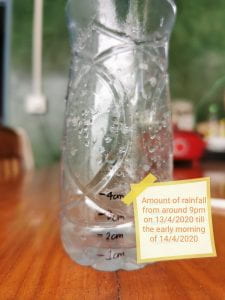
My own makeshift rain gauge, measuring the amount of rainfall over the Lao New Year period (14 April 2020)

When in Laos, do what the Laotians do: I tried making my own teleos to ward off the covid-19 evil spirits (5 April 2020)
I was glad to finally have access to cable TV, and hence have more information about how the world was reacting to the covid-19 pandemic. Benny also invited me to join his family for a few meals (Bak Kut The, mookata, and a burger at Pullman Hotel!), and it was great to be able to have sustained conversations with people face-to-face again. However, the weather was unbearably hot on days without rain (reaching 40°C on some days), and when it did rain, it was inconvenient to go out to get food. As the days passed without any increase in covid-19 cases,[11] more people gradually came out on the streets – there was even a news report about traffic jam in Vientiane![12] However, large gatherings were still not allowed. I met up with Honey and Ye, who had returned from her Bangkok internship to work-from-home and who had served out her 14-day quarantine at her home. Oudom came back to Luang Prabang and passed me two bottles of fresh honey from his family’s farm. He looked like he needed a shave and a haircut! Bopha also came back from her village looking several tones darker, thanks to plentiful sunlight (Vitamin D!) from helping out to prepare her family’s ricefield.
I also discussed return flight options with Benny. The only return flight option that the Singapore embassy was aware of was on 9 May 2020, and it had to be via South Korea. It was also ridiculously expensive. I remember Benny mentioned that there were talks within Southeast Asia to resume tourism, and that Thai AirAsia might operate again in early-June. However, that was still only a possibility, not a certainty, and due to personal reasons then I needed certainty. Eventually, I booked the expensive, long flight home. Despite the lifting of the lockdown in early-May, inter-provincial travel was still discouraged so Lao Airlines did not resume its domestic flights[13] – thus I had to book a mini-van to get to the Vientiane airport. I’m glad I caught that flight because, as far as I know, there are still no commercial flights in and out of Laos today.
I was so lucky to squeeze in a final visit to my field-site on 5-7 May 2020. Siphanh was a great help in making this happen. He called the village leader’s house a few times in end-April to check on whether I could go to the village. Initially, the village leader was out in the field, so his family member informed that actually the village was starting to open up to outsiders, as there were some government staff visiting to conduct a coffee-planting extension project. This corroborated with the information from a villager friend who was studying at Souphanouvong University but who was able to go back to visit his family. Finally, Siphanh managed to reach the village leader, who said that I could enter the village but that I should get a health certificate first to show that I was covid-free. At the same time, Siphanh informed that, due to an attempted burglary at his residence, his motorbike had to be sent for repair. I started making contingency plans in case his motorbike could not be repaired in time. On Friday 1 May, I went to the Provincial Hospital, but was told that I should return the next Monday – I didn’t realise that it was Labour Day! So I spent the weekend doing whatever planning and packing I could. When Monday came, I went back to the Provincial Hospital. The parking attendant recognised me: this solo female foreigner on a bicycle. The hospital was crowded early in the morning, and I was confused about where to go to get the health certificate. Thankfully, the staff and patients/visitors were proactive in stepping forward to help me, e.g. pointing out where I should wait. Although I am Asian and have been said to look like Thai/Lao/Filipino, my bespectacled look and my dressing – and probably my confused face – still revealed my foreignness. Finally, I met the doctor, a very nice man who spoke English. He took my temperature and wrote on the health certificate that I did not have any symptoms of covid-19. The health certificate that he issued was in English, however! How would the village leader read it?!! In any case, I took my precious health certificate and got it stamped by the hospital’s director-general authorities. I was elated to be one step closer to going to my fieldsite. The same afternoon, Siphanh collected his motorbike. Things all fell into place: we were ready to go.
Fieldwork was slightly bittersweet, because I knew it was my last visit there for at least a year. We managed to gather the data I needed, though perhaps being able to spend one more day in the village would have helped yield better-quality information, given that some villagers were stayed overnight in their fields during this planting season. When the village leader found out that it was my final visit, and that I would have a long journey back to Singapore, he organised a baci ceremony for me. It involved the sacrifice of a chicken, but since I am vegetarian (but was fine with drinking the soup), Siphanh happily gobbled up the chicken. Village food is delicious! I was very touched during the ceremony (which involves village elders muttering their blessings while tying a white cotton thread around the wrist) and could not contain my tears when giving my remarks. This village, comprising the Khmu and Hmong ethnicities, was very unique in that the villagers really care for one another. We gave a presentation on the summary of my research recommendations after the meal, played a bit of petanque, and conducted the final interviews. Before we left, we said goodbye to the village leader. He told me to not forget about the village, and that he would like to maintain the connection and learn more about how the village could develop like Singapore. There was no time to expound on the downsides of Singapore past development trajectory; nor was it the appropriate context. But I understood what he meant.
Siphanh sent me back to my accommodation in the city centre, and we said our goodbyes. It was a pity that, due to the lockdowns, I was not able to go to Oudomxay to visit his very witty and adventurous mother, whom we had hosted in Singapore in February. After I cleaned up, Benny generously treated me to some Chinese food as my farewell dinner, and brought me to buy the snacks that I might need for my journey. Before I left Luang Prabang in the morning of 8 May, I got the minivan driver to wait for me at the CHESH-Lao office: I passed Ye some posters which she could reuse, left my soil auger there (I had received an email that the chartered flight to South Korea had reduced passengers’ check-in allowance by 5kg due to forecasted turbulent weather), and said a rushed goodbye to Viengphet and Mr Phonthip. Then the minivan driver brought me to the immigration office to pick up my passport (I had requested for a second visa extension), and we were on our way to Vientiane. Due to the ongoing restrictions on inter-provincial travel, the Singapore Embassy had provided documents explaining that I was going to catch a flight. It turned out that these were not needed, as the driver seemed to have prepared the necessary when checked by the authorities.
I arrived at the airport 4 hours before the check-in time – except for a few staff, it was completely empty! However, a large crowd started to gather just before check-in time, and it was evident that there were many people leaving Laos: the majority were Koreans (there was a pregnant lady), and there were people transiting onwards to other countries (including two cats going to the USA). I was one of the last to check-in, and slightly annoyed that check-in baggage weight above 15kg was allowed as long as we paid the excess baggage fees. If the reduction of check-in baggage allowance was really due to safety concerns over the turbulent weather, this should not even be allowed! Everyone, including myself, also had a lot of carry-on baggage.
Luckily, the said turbulent weather had mostly passed by the time we boarded, and the flight arrived safely in Seoul early the next morning. I was tired, but excited to explore the Incheon airport, which probably had less than 10% of its pre-covid crowd. Likewise, the Singapore Airlines flight back to Singapore was almost empty, but I was impressed that the inflight service was still top-notch. Because I indicated in my travel declaration that I had visited a hospital overseas (for the Health Certificate), I had to fill in more forms and getting my temperature checked by the team at the Singapore airport. After a 40-hour journey, I finally reached Rasa Shangri-la Sentosa, the hotel where I served out my 14-day stay-at-home notice.

It was great to have my cousin, who happened to be on-duty at Rasa Shangri-la Sentosa that evening, ‘visit’ me – albeit in an extremely socially-distanced manner (13 May 2020)
===
In all, I was incredibly fortunate to squeeze in a final visit to my field-site. It made waiting out the lockdown in Laos worthwhile. I was also lucky to catch the flight back: whenever I see Facebook posts by foreigners who are unwillingly stranded in Laos, I shudder to think that I might have been one of them. I do miss Laos, particularly my collaborators and friends, all of whom I had to say such a rushed goodbye to.
Sumiya has not been able to go to Laos to continue her fieldwork because of, understandably, the travel restrictions imposed by NUS. Likewise, several other PhD students in the midst of their fieldwork had to make major modifications to their overseas fieldwork plans or their original research proposal. The uncertainty of the situation increased anxiety to an already-stressful undertaking of a PhD.
In Singapore, it was heartbreaking to see the empty coffee shops in my neighbourhood during the ‘circuit breaker’ period. Coffee shops are such an iconic feature of Singaporean culture. The government offered relief packages so that jobs could be sustained for a while, but the effects on the economy are still being felt.
Likewise, the Lao economy is affected: due to the restrictions on international travel, tourism-dependent businesses are finding it hard to survive. Jobs have been cut, and graduates find it difficult to find jobs. For example, my villager friend graduated with a major in Hotel Management. As a hardworking person with excellent attitude, I thought his prospects were bright, but now he raises cows in his village for a living. Oudom had also found a good employer in the Elephant Conservation Centre at the start of 2020, but his job is currently suspended due to the shortage of funds.[14] Hopefully, the recently-launched campaign to promote domestic tourism[15] can help rejuvenate tourism-dependent businesses. But between opening up to revive the economy and remaining closed to safeguard its citizens from the global pandemic, the latter is probably the wiser choice for the country.[16]
Given that this virus started spreading because of how humans disrepect nature, as part of the recovery we should really rethink how we can better live in harmony with nature. Otherwise, what would be the point of all this emotional, psychological and economic suffering that so many people have gone through?
=== === ===
[1] https://laotiantimes.com/2020/03/17/pm-orders-preschool-and-kindergarten-closures-in-laos/
[2] https://www.channelnewsasia.com/news/singapore/wuhan-virus-coronavirus-groceries-supplies-ntuc-sheng-siong-12406906
[3] https://www.straitstimes.com/singapore/singapore-residents-advised-to-defer-all-non-essential-travel-for-next-30-days-as-part-of
[4] https://www.who.int/laos/news/detail/24-03-2020-ministry-of-health-and-who-respond-to-first-case-of-covid-19-in-laos; https://laotiantimes.com/2020/03/24/laos-confirms-first-covid-19-cases/
[5] https://laotiantimes.com/2020/03/25/prime-minister-recommends-nationwide-self-isolation/
[6] https://laotiantimes.com/2020/03/29/laos-to-enter-full-lockdown-starting-march-30/
[7] https://www.channelnewsasia.com/news/singapore/coronavirus-covid-19-lee-hsien-loong-address-nation-friday-apr-3-12605748?cid=h3_referral_inarticlelinks_24082018_cna
[8] https://www.asiaone.com/singapore/throngs-queue-outside-ikea-prior-store-closures-due-circuit-breaker
[9] https://laotiantimes.com/2020/04/12/laos-confirms-19th-case-of-covid-19-infection/
[10] https://laotiantimes.com/2020/04/15/laos-extends-lockdown-until-03-may/
[11] https://laotiantimes.com/2020/04/29/laos-controlling-covid-19-outbreak-no-new-cases-in-16-days/
[12] https://laotiantimes.com/2020/04/20/lockdown-breakdown-vientiane-population-takes-to-the-road/
[13] https://laotiantimes.com/2020/05/01/laos-to-loosen-lockdown-measures-in-bid-to-restart-economy/
[14] The Elephant Conservation Centre launched a fundraiser campaign: https://www.gofundme.com/f/eccaccelerator
[15] https://laotiantimes.com/2020/09/13/lao-thiao-lao-campaign-launched-to-boost-domestic-tourism/
[16] There have been efforts to build capacity in Laos, such as by the Chinese government (https://laotiantimes.com/2020/03/26/china-sends-medical-experts-to-help-laos-fight-covid-19/). However, due to the remoteness of villages, access to healthcare remains weak.

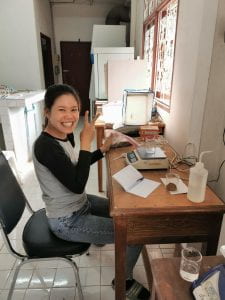
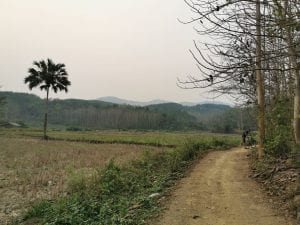
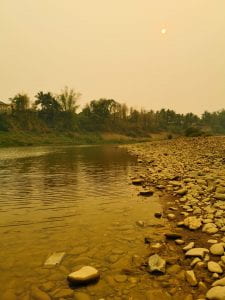

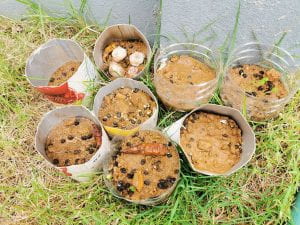
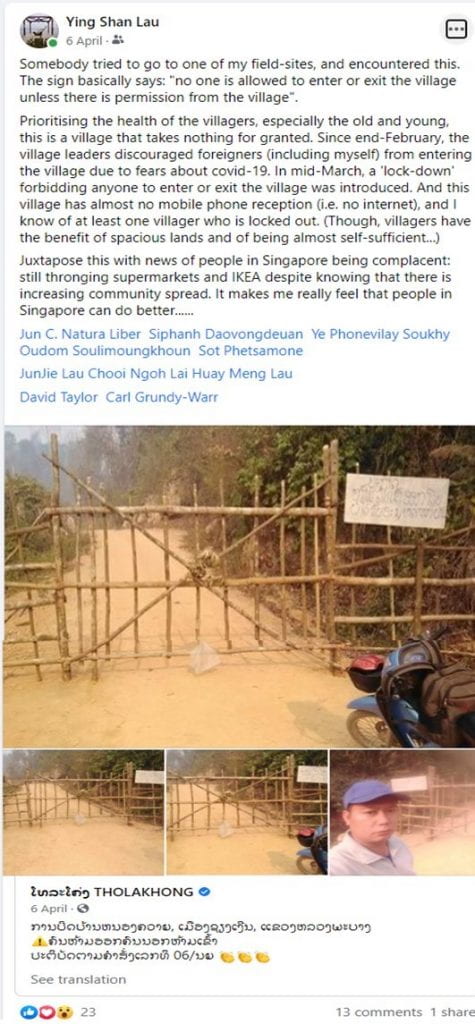


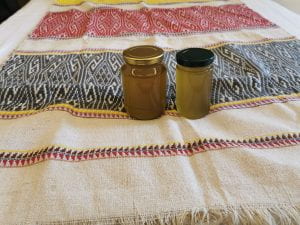



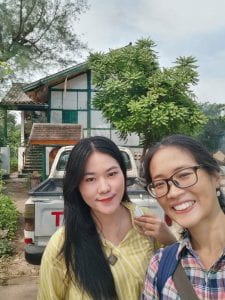


Leave a Reply